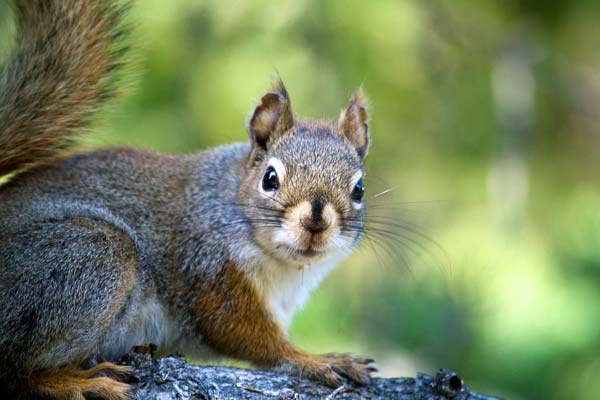
Stressed mother squirrels make faster-growing babies
Published: April 24, 2013
When red squirrel mothers in the Yukon detect a lot of other red squirrels in their neighborhood they raise larger babies that will have a better chance of securing a territory and surviving the winter.
The research, published in the latest issue of the journal Science, shows that red squirrels are able to use cues in the environment to program the growth of their offspring. The work is by researchers at the University of Toronto Scarborough (UTSC), Michigan State University, University of Guelph, University of Alberta, McGill University, and the Veterinary University of Vienna.
“What it shows is that mother red squirrels perceive how crowded the neighborhood is, and then, through the modifying effect of stress hormones, cause their offspring to grow faster and thus be bigger at weaning,” says Rudy Boonstra, (pictured below) professor of biological sciences at the UTSC and a co-author of the paper.
Because red squirrels are territorial, only those large enough to stake out and defend a territory from other squirrels will survive the winter and breed in future years.
 For this study, Ben Dantzer, then a PhD student at Michigan State University, went to the southwestern Yukon to work at the Kluane Red Squirrel Project. Dantzer created the illusion that squirrel density was greater than it was by playing recordings of other red squirrels making territorial vocalizations. For the mother squirrels, it was as if the density of the neighborhood had increased six-fold. This stressed the mothers, who then programmed the babies to grow more rapidly.
For this study, Ben Dantzer, then a PhD student at Michigan State University, went to the southwestern Yukon to work at the Kluane Red Squirrel Project. Dantzer created the illusion that squirrel density was greater than it was by playing recordings of other red squirrels making territorial vocalizations. For the mother squirrels, it was as if the density of the neighborhood had increased six-fold. This stressed the mothers, who then programmed the babies to grow more rapidly.
The change was the result of higher levels of the stress hormone cortisol in the mothers. When mothers in the field were artificially given cortisol supplements, they also produced faster growing babies.
Boonstra, an expert in the role of stress in wild animals, says the evidence from the Red Squirrel Project indicates that the changes are adaptive. He pointed out that being bigger comes with costs – the bigger squirrels live shorter lives. But in more crowded conditions, they have a better chance of living until the following spring, and the tradeoff was worth it.
Dantzer, who is now at the University of Cambridge, conducted work with his thesis advisor Andrew G. McAdam of Guelph while Boonstra served as a co-supervisor. Critical contributions also came from Amy Newman , University of Guelph; Stan Boutin, University of Alberta; Murray Humphries, McGill University; Rupert Palme, University of Veterinary Medicine Austria.



